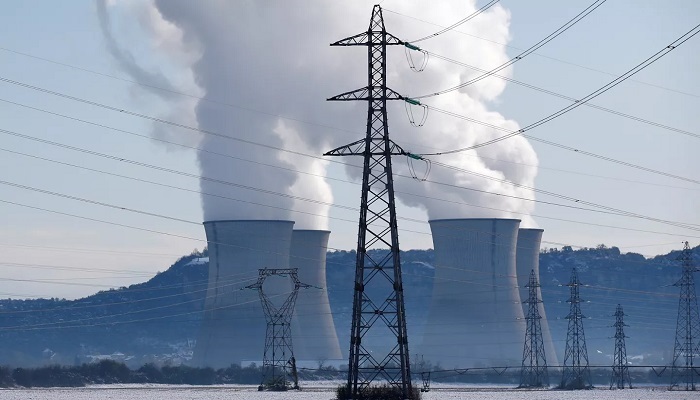The nuclear power production in France has surged to its highest levels in three years, and that too in the first nine days of January, thereby stamping a 18% surge in nuclear generation from the same period last year, as per LSEG’s power generation data.
It is well to be noted that the higher French output comes as a cold snap which happens to be extending from the Nordic countries, has gone on to lift regional demand when it comes to heating and has enabled Europe’s largest electricity exporter to push clean power flows to neighboring countries so far in 2024, as per the data from the IEA.
The fact is that if France’s main power offeror EDF, can go on to sustain high levels of clean power output as well as exports, utilities any place else may as well be able to curtail fossil fuel usage in power generation this winter and potentially escape from the traditional surge in power pollution teamed with a greater heating-related generation.
Reactor Rebound
It is worth noting that extended maintenance issues at certain major but aging reactors have gone on to curb France’s nuclear generation to 34-year lows in 2022, thereby forcing power firms to elevate fossil fuel usage in electricity generation when it comes to Europe’s most nuclear-dependent power system.
Significantly, nuclear output dearth’s also forced French power firms to erratically reverse traditional power flows in Europe by being the net importers, thereby trembling the regional power price crisis amidst Russia and Ukraine war.
The fact is that engineers worked to restore output all through 2023 and, at the same time, managed to push up overall nuclear generation by almost 15% by the end of the year from 2022’s dismal total, shows the LSEG data.
So far this year, EDF, which happens to be France’s main power firm, has gone on to take the output recovery a step beyond by steeply overtaking output levels in early 2023 as well as 2022, but the production continues to fall behind 2021’s total by approximately 10%.
Numerous key reactors need further maintenance work this year because of corrosion issues, but EDF has gone on to say that it is targeting an overall nuclear output of 365 terawatt hours- TWh by 2025, vis-à-vis just below 320 TWh in 2023, as per Ember. The company, in all its might, is planning to produce 400 TWh of nuclear output by the end of the decade.
Higher Exports To Deplete Emissions?
If the nuclear generation in France’s total happens to be well over 2023’s stunted levels for the upcoming months, the country could very well sustain its high levels of clean power exports to neighboring countries.
By Jan. 9, France happens to be an average daily net exporter of more than 12.2 gigawatts- GW of power, with almost 3 GW going to Germany and another 6 GW distributed to Switzerland, the UK, as well as Italy, says the International Energy Agency- IEA.
It is well to be noted that the net export total happens to be almost 70% more than across the same period in 2023, when France happened to be the net importer of power from Spain and was pushed to constrain exports across key markets like Switzerland and Italy because of limited domestic output.
And while major economies like Germany have an overall average power demand of almost 65-70 GW per hour, the 5-10 GW of power imports the country goes on to make daily aid in reducing the strain when it comes to domestic power producers.
It is worth noting that regular clean power imports also aid in reducing the requirement for local power firms so as to use high-polluting power sources like coal plants, which can be immense contributors when it comes to regional emission tallies.
Significantly, coal accounted for almost half of the European power sector’s 1.42 billion metric tons of CO2 emissions last year but went on to generate just 14.2% of the region’s overall electricity.
This goes on to mean that any measures that can decrease coal’s pie of the generation mix can go on to have a significant cut when it comes to potential pollution tallies.
Moreover, Europe’s power emissions tend to heighten during the winter when higher heating demand elevates the region’s power producers so as to surge output from all sources, like coal, so as to meet elevated levels of energy consumption.
In 2024, if France’s power firms can continue to keep the strong pace of nuclear output seen thus far, Europe’s other power producers may as well be able to keep coal generation levels in limit, and in the process, they can go on to keep a lid on pollution.




































